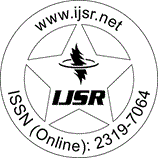Downloads: 1 | Views: 73 | Weekly Hits: ⮙1 | Monthly Hits: ⮙1
Analysis Study Research Paper | Law | India | Volume 14 Issue 1, January 2025 | Popularity: 4.6 / 10
Comparative Analysis of Legal Profession in Post Soviet States
Dr. Abhishek Srivastava
Abstract: The dissolution of the Soviet Union in 1991 marked a pivotal moment in global geopolitics, leading to the emergence of 15 independent states, each embarking on unique legal and institutional transformations. This article provides a comparative analysis of the evolution of the legal profession across these nations, highlighting their shared Soviet legacies and diverse reform trajectories. While Baltic states aligned with European standards, Central Asian nations-maintained hybrid systems blending Soviet-era practices with modernization efforts. Key reforms include advancements in legal education, digitalization of legal services, and regulatory improvements, though challenges such as judicial independence, corruption, and resource disparities persist. Case studies, including Kazakhstan?s judicial transparency initiatives and Estonia?s innovative e-governance, illustrate varied successes and hurdles. By examining these developments, the article sheds light on the broader challenges and opportunities for advancing legal systems in transitional societies.
Keywords: post-Soviet legal systems, judicial reforms, legal education, judicial independence, comparative legal analysis
Edition: Volume 14 Issue 1, January 2025
Pages: 877 - 880
DOI: https://www.doi.org/10.21275/SR25118231922
Make Sure to Disable the Pop-Up Blocker of Web Browser
